Zinc Improves Functional Recovery by Regulating the Secretion of Granulocyte Colony Stimulating Factor From Microglia/Macrophages After Spinal Cord Injury
- PMID: 30774583
- PMCID: PMC6367229
- DOI: 10.3389/fnmol.2019.00018
Zinc Improves Functional Recovery by Regulating the Secretion of Granulocyte Colony Stimulating Factor From Microglia/Macrophages After Spinal Cord Injury
Abstract
While zinc promotes motor function recovery after spinal cord injury (SCI), the precise mechanisms involved are not fully understood. The present study aimed to elucidate the effects of zinc and granulocyte colony stimulating factor (G-CSF) on neuronal recovery after SCI. The SCI model was established by Allen's method. Injured animals were given glucose and zinc gluconate (ZnG; 30 mg/kg) for the first time at 2 h after injury, the same dose was given for 3 days. A cytokine antibody array was used to screen changes in inflammation at the site of SCI lesion. Immunofluorescence was used to detect the distribution of cytokines. Magnetic beads were also used to isolate cells from the site of SCI lesion. We then investigated the effect of Zinc on apoptosis after SCI by Transferase UTP Nick End Labeling (TUNEL) staining and Western Blotting. Basso Mouse Scale (BMS) scores and immunofluorescence were employed to investigate neuronal apoptosis and functional recovery. We found that the administration of zinc significantly increased the expression of 19 cytokines in the SCI lesion. Of these, G-CSF was shown to be the most elevated cytokine and was secreted by microglia/macrophages (M/Ms) via the nuclear factor-kappa B (NF-κB) signaling pathway after SCI. Increased levels of G-CSF at the SCI lesion reduced the level of neuronal apoptosis after SCI, thus promoting functional recovery. Collectively, our results indicate that the administration of zinc increases the expression of G-CSF secreted by M/Ms, which then leads to reduced levels of neuronal apoptosis after SCI.
Keywords: G-CSF; NF-kappa B; microglia/macrophages; spinal cord injury; zinc.
Figures
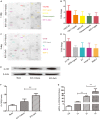

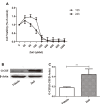
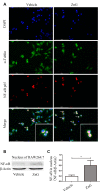

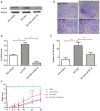
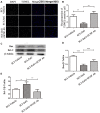
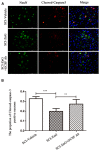
Similar articles
-
Effects of granulocyte colony-stimulating factor and granulocyte-macrophage colony-stimulating factor on glial scar formation after spinal cord injury in rats.J Neurosurg Spine. 2014 Dec;21(6):966-73. doi: 10.3171/2014.8.SPINE131090. Epub 2014 Oct 3. J Neurosurg Spine. 2014. PMID: 25279652
-
Zinc deficiency impairs axonal regeneration and functional recovery after spinal cord injury by modulating macrophage polarization via NF-κB pathway.Front Immunol. 2023 Nov 8;14:1290100. doi: 10.3389/fimmu.2023.1290100. eCollection 2023. Front Immunol. 2023. PMID: 38022538 Free PMC article.
-
Epothilone B impairs functional recovery after spinal cord injury by increasing secretion of macrophage colony-stimulating factor.Cell Death Dis. 2017 Nov 2;8(11):e3162. doi: 10.1038/cddis.2017.542. Cell Death Dis. 2017. PMID: 29095439 Free PMC article.
-
Zinc promotes functional recovery after spinal cord injury by activating Nrf2/HO-1 defense pathway and inhibiting inflammation of NLRP3 in nerve cells.Life Sci. 2020 Mar 15;245:117351. doi: 10.1016/j.lfs.2020.117351. Epub 2020 Jan 22. Life Sci. 2020. PMID: 31981629
-
Granulocyte colony-stimulating factor effects on neurological and motor function in animals with spinal cord injury: a systematic review and meta-analysis.Front Neurosci. 2023 Jun 28;17:1168764. doi: 10.3389/fnins.2023.1168764. eCollection 2023. Front Neurosci. 2023. PMID: 37449274 Free PMC article. Review.
Cited by
-
Recent Advances in the Role of Nuclear Factor Erythroid-2-Related Factor 2 in Spinal Cord Injury: Regulatory Mechanisms and Therapeutic Options.Front Aging Neurosci. 2022 Jun 10;14:851257. doi: 10.3389/fnagi.2022.851257. eCollection 2022. Front Aging Neurosci. 2022. PMID: 35754957 Free PMC article. Review.
-
Neuroprotection, Recovery of Function and Endogenous Neurogenesis in Traumatic Spinal Cord Injury Following Transplantation of Activated Adipose Tissue.Cells. 2019 Apr 8;8(4):329. doi: 10.3390/cells8040329. Cells. 2019. PMID: 30965679 Free PMC article.
-
Association between Cu/Zn/Iron/Ca/Mg levels and cerebral palsy: a pooled-analysis.Sci Rep. 2023 Oct 27;13(1):18427. doi: 10.1038/s41598-023-45697-w. Sci Rep. 2023. PMID: 37891210 Free PMC article.
-
Grape Seed Proanthocyanidins Exert a Neuroprotective Effect by Regulating Microglial M1/M2 Polarisation in Rats with Spinal Cord Injury.Mediators Inflamm. 2022 Aug 4;2022:2579003. doi: 10.1155/2022/2579003. eCollection 2022. Mediators Inflamm. 2022. PMID: 35966334 Free PMC article.
-
Zinc provides neuroprotection by regulating NLRP3 inflammasome through autophagy and ubiquitination in a spinal contusion injury model.CNS Neurosci Ther. 2021 Apr;27(4):413-425. doi: 10.1111/cns.13460. Epub 2020 Oct 9. CNS Neurosci Ther. 2021. PMID: 33034415 Free PMC article.
References
-
- Bernstein H. G., Ansorge S., Aurin H., Mielke K., Preusser Y., Weiss J., et al. . (1986). Immunohistochemical evidence of thiol-protein disulfide oxidoreductase (TPO) in neurosecretory nerve cells of different vertebrates. Cell. Mol. Biol. 32, 37–40. - PubMed
LinkOut - more resources
Full Text Sources

